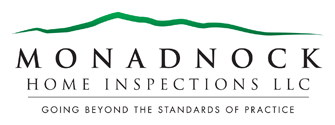Chimney fires are a risk in any home with a fireplace. Because they burn higher up inside the chimney, many chimney fires go undetected for hours. They are dangerous because they could damage the roofing and the structure of your home. Here are a few ways to help prevent chimney fires.
1. Annual Chimney Inspection
Preventing chimney fires starts with regular maintenance. Keeping the chimney clean is important. When the fireplace is regularly used, creosote builds up in the chimney.
Creosote is a highly combustible material caused by poor ventilation and using unseasoned or soft wood, like pine. It is a dark brown, flaky material. If you notice creosote, discontinue the use of your fireplace until the chimney can be cleaned.
To remove the creosote and reduce the risk of fire, your chimney should be inspected and cleaned at least once a year.
2. Prevent Chimney Fires with Proper Burning Technique
Building smaller, hotter fires is a smart tip for safety because this creates a cleaner-burning fire. A fire that burns hot helps to limit air pollution, smoke, and creosote buildup.
3. Safe Types of Wood
Along with building small fires, pay attention if smoke begins to fill your home when you’re using the fireplace. This is often due to the type of wood you’re using. Damp, freshly cut wood creates more smoke and contributes to increased creosote build-up. Dry, low-moisture hardwoods like oak or maple that have been seasoned for several months are the best choice.
Chopped wood needs between 6-12 months to fully dry. This means it’s best to chop wood in the spring to prepare for using the fireplace in winter. If you chop your own firewood, properly stack and place the wood in a covered area away from the home while it dries.
4. Install a Chimney Cap to Help Prevent Fires
A chimney cap helps prevent fires by blocking leaves, twigs, and pine needles from falling down the chimney. These materials can become trapped within the flue and act as a natural kindling for a fire. To prevent this from happening, invest in a chimney cap to keep debris out.
Often, people only notice that there is a fire in the chimney if it begins to spread and threaten the home. There may be damage to the chimney interior and possibly damage to the roofing or structure of the home. You can reduce the risk of a chimney fire by using the tips above.
Monadnock Home Inspections provides inspections in Southern New Hampshire. Contact us to schedule our services.

